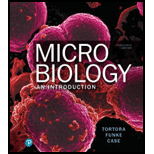
Concept explainers
The koala is a leaf-eating animal. What can you infer about its
To review:
The digestive system of koala, a leaf-eating animal.
Introduction:
Koala is a mammal which mainly survives on a diet of eucalyptus leaves, something that is extremely poisonous to many animals. Eucalyptus leaves are rich in fiber and have a very low nutritional level. Koalas have the tendency to rarely drink water as they absorb the required amount of water from the leaves. Koalas have a specialized digestive system adapted to their unique diet that enables the detoxification of poisonous chemicals present in the eucalyptus leaves.
Explanation of Solution
The Koala’s digestive system consists of the esophagus, stomach, caecum, small intestine, proximal colon, distal colon, rectum, and anus. Caecum is a specialized fiber-digesting organ present in Koalas. Though humans also possess this organ, Koalas have a caecum that is about 200 cm long. This highly voluminous caecum harbors millions of bacteria which facilitate the digestion of fiber into a form that can be easily absorbed. The gut microflora of Koala also aid in the digestion of toxic compounds present in eucalyptus leaves. Deterioration of these unique microbes in the gut has severe effects that essentially make them stop feeding as they would not be able to break down such poisonous compounds.
The extremely developed caecum of Koalas, harboring cellulose-degrading microorganisms, facilitates the survival of Koalas which live on a unique diet of eucalyptus leaves.
Want to see more full solutions like this?
Chapter 27 Solutions
Microbiology: An Introduction Plus Mastering Microbiology with Pearson eText -- Access Card Package (13th Edition) (What's New in Microbiology)
Additional Science Textbook Solutions
Biological Science (6th Edition)
EBK INTRODUCTION TO CHEMISTRY
Chemistry: Structure and Properties (2nd Edition)
Laboratory Manual For Human Anatomy & Physiology
SEELEY'S ANATOMY+PHYSIOLOGY
General, Organic, and Biological Chemistry: Structures of Life (5th Edition)
- How is a protein destined for the Endoplasmic Reticulum (ER), imported into the ER? Be concise.arrow_forwardFind out about the organisations and the movements aimed at the conservation of our natural resources. Eg Chipko movement and Greenpeace. Make a project report on such an organisation.arrow_forwardWhat are biofertilizers and mention the significancearrow_forward
- PCBs and River Otters: Otters in Washington State’s Green-Duwamish River have high levels of polychlorinated biphenyls (PCBs) in their livers. PCBs can bind to the estrogen receptors in animals and disrupt the endocrine system of these otters. The PCBs seem to increase the estrogen to androgen ratio, skewing the ratio toward too much estrogen. How would increased estrogen affect the river otter population? Based on your reading of the materials in this unit, what factors can affect fertility in humans? Explain how each of the factors affecting human fertility that you described can disrupt the human endocrine system to affect reproduction.arrow_forwardOther than oil and alcohol, are there other liquids you could compare to water (that are liquid at room temperature)? How is water unique compared to these other liquids? What follow-up experiment would you like to do, and how would you relate it to your life?arrow_forwardSelection of Traits What adaptations do scavengers have for locating and feeding on prey? What adaptations do predators have for capturing and consuming prey?arrow_forward
- Competition Between Species What natural processes limit populations from growing too large? What are some resources organisms can compete over in their natural habitat?arrow_forwardSpecies Interactions Explain how predators, prey and scavengers interact. Explain whether predators and scavengers are necessary or beneficial for an ecosystem.arrow_forwardmagine that you are conducting research on fruit type and seed dispersal. You submitted a paper to a peer-reviewed journal that addresses the factors that impact fruit type and seed dispersal mechanisms in plants of Central America. The editor of the journal communicates that your paper may be published if you make ‘minor revisions’ to the document. Describe two characteristics that you would expect in seeds that are dispersed by the wind. Contrast this with what you would expect for seeds that are gathered, buried or eaten by animals, and explain why they are different. (Editor’s note: Providing this information in your discussion will help readers to consider the significance of the research).arrow_forward
- Essentials Health Info Management Principles/Prac...Health & NutritionISBN:9780357191651Author:BowiePublisher:CengageEssentials of Pharmacology for Health ProfessionsNursingISBN:9781305441620Author:WOODROWPublisher:Cengage
 Concepts of BiologyBiologyISBN:9781938168116Author:Samantha Fowler, Rebecca Roush, James WisePublisher:OpenStax College
Concepts of BiologyBiologyISBN:9781938168116Author:Samantha Fowler, Rebecca Roush, James WisePublisher:OpenStax College





